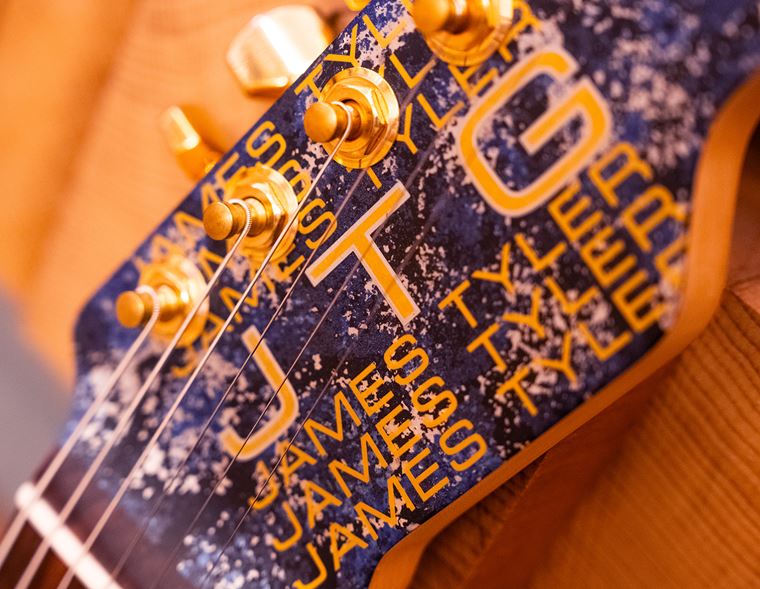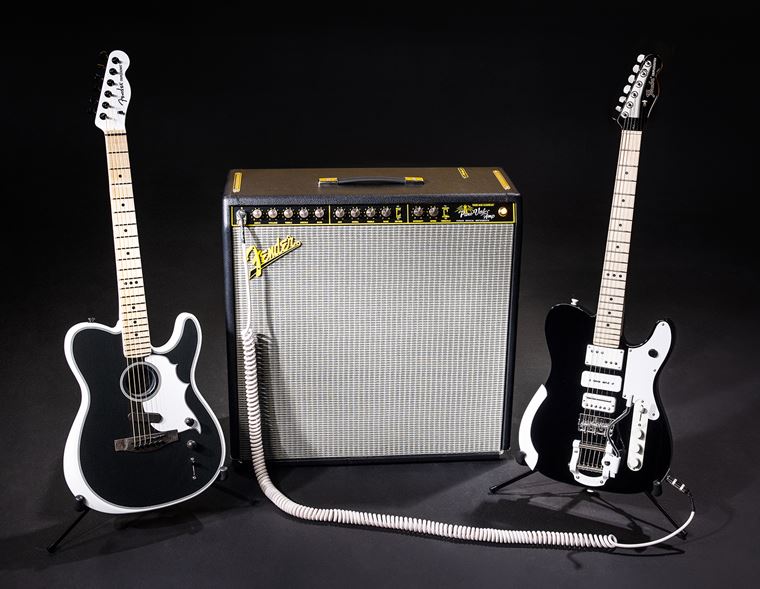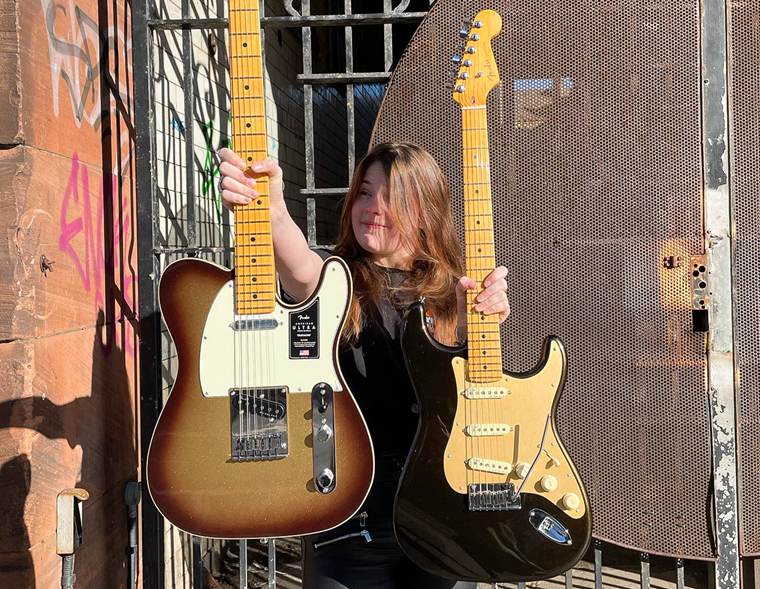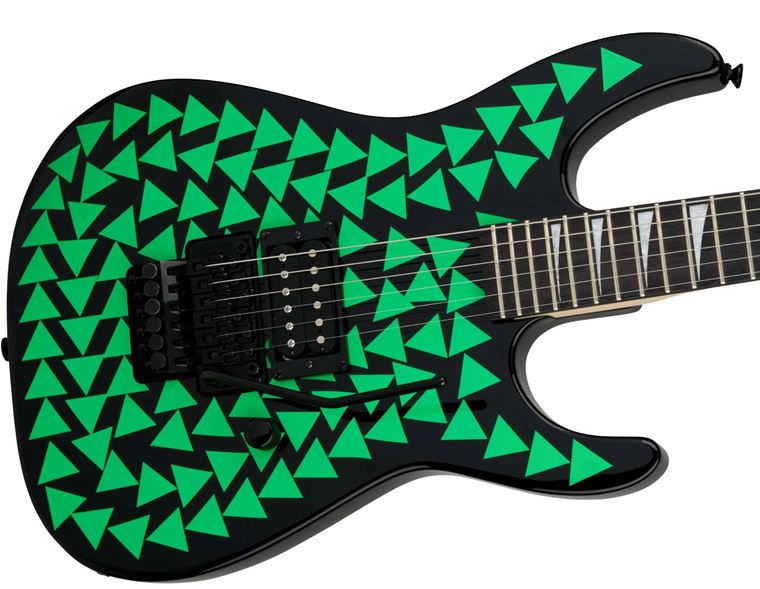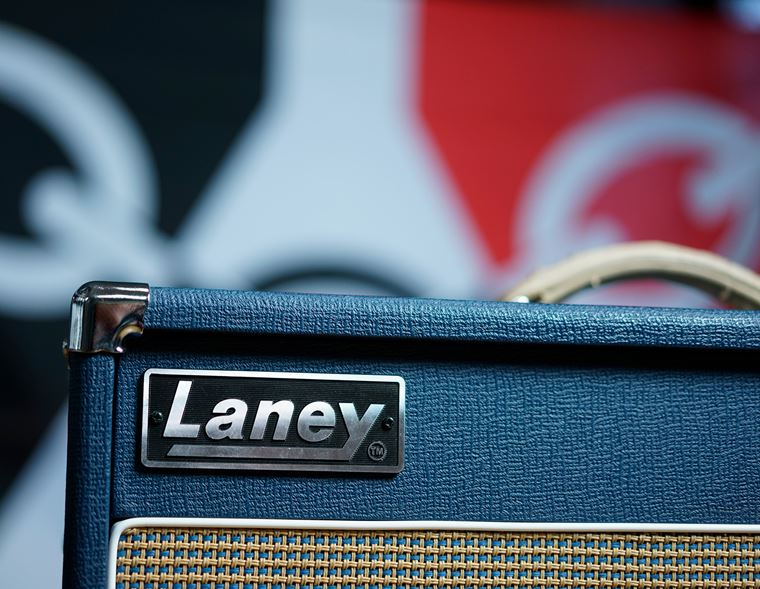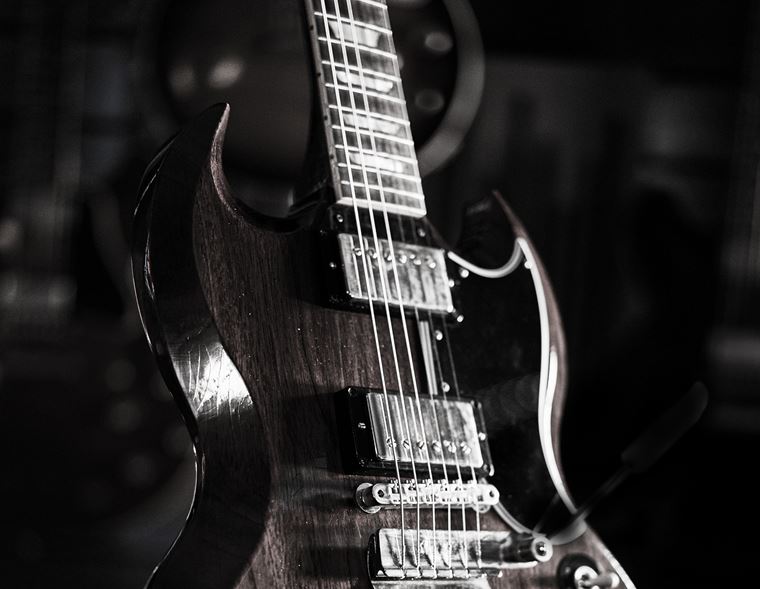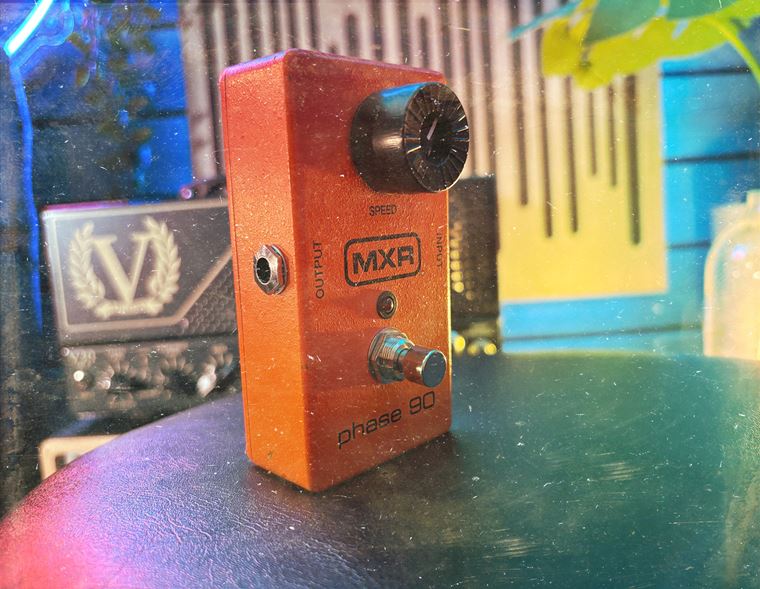The Greatest: Guitar Instrumentals
Published on 05 June 2020
The electric guitar is the greatest instrument ever.
That’s obvious! You don’t need us to tell you that. The electric guitar can be used in so many ways and in so many contexts, it’s almost chameleonic. Without doubt the most significant instrument of the last 150 years, the electric guitar is the primary tool for a great many expressive, ambitious musicians.
We particularly love it when guitar is put front and centre in a song. Sometimes, the lead singer will even back off and allow the guitar to take the entire melody. This is what this blog sets out to celebrate: those songs where the guitar reveals its genius and stamps its authority and magic over the music.
It isn’t all about electric guitars, though. Classical and acoustic guitars are equally capable of taking centre-stage and leading the song. Whilst there are whole sub-sections of genres on acoustic tapping and classical repertoire, all involving beautiful music, we’ve elected to just include one each. It’s a tough gig!
We’ve picked twelve examples (narrowing it to ten was making us miserable) from history and compiled them into chronological order, for coherence as much as anything. As always, even twelve spaces isn’t a lot, so please tell us in the comments below, which ones you’d have included. Onwards!
Rumble – Link Wray
This swaggersome cut from 1958 promptly puts paid to any notions that guitar instrumentals are mere excuses for a show of technique. Rumble is nothing but full-on attitude, with a lead guitar sound achieved by slashing the speaker cone with a razor in order to get a hotter, more distorted tone.
Rumble got its name since one of the producers thought it sounded like a streetfight. We know what he means: you can almost hear the biker jackets and switchblades in this mean tune. Fun trivia: Rumble is one of the very first recorded songs to feature power chords. Appropriate!
Apache – The Shadows
How could this list exist without Hank B Marvin and his twangy melodies? In reality, we could’ve picked any Shadows hit, from Wonderful Land to Man of Mystery, since they all follow the same winning blueprint: a super catchy melody, a subtly addictive rhythm and a tone to die for.
Every day, in one or more of our guitarguitar stores, players of a certain age will make enquiries on how to attain that immortal Hank Marvin tone. His appeal is never-ending! A 1950s Strat, Vox combo and vintage echo unit will help, but the feel and execution are every bit as important.
Miserlou – Dick Dale
This is another guitar instrumental that’s difficult to dodge. Arguably brought back from Surf-music obscurity by its incendiary use in Pulp Fiction, Dick Dale’s aggressive turbo-picking is a piece that every guitarist would love to be able to unleash.
The tune, taken from an old Eastern European folk song, is easy enough to get under the fingers: it’s the right-hand stamina required to effectively and consistently pound those 16th notes that sorts the players out from the wasters! The tone is something else, too: Dick Dale used to literally blow up his massive amps in his ever-increasing efforts to drown out all of creation with his sound. Fender, in a gleefully Spinal Tap-esque move, actually invented a special, super-loud amp just for him! Check out the video below: the audio's not great, but the video is super cool!
Samba Pa Ti – Santana
Guitar hero Carlos Santana is renowned as one of the world’s most tasteful and melodic players. A famous champion of both PRS guitars and Mesa Boogie amps, Santana is the type of player known to have a superb tone, excellent control, and a wonderful sense of timing. His guitar parts can be hummed and danced to, which increases his popularity way beyond guitar circles.
There have been a good few Santana instrumentals over the years, and we were caught between picking Europa and this one. Samba Pa Ti won out in the end for its stunning melodicism. Santana’s guitar style is a gorgeous mix of Blues, Jazz and Latin styles, all played with great taste and execution. Lots of bite and a fair amount of gain will help you get closer to his ‘smoothness’! Minor keys and the Dorian mode are appropriate here, too.
Maggot Brain – Parliament
Maggot Brain is a true epic. Eddie Hazel is the main man on this ten-minute wig-out, recorded in one take after Parliament head-honcho George Clinton advised Hazel to play ‘as if he had been told his mother was dead’. Heavy stuff. Clinton added the Ephoplex delay to Hazel’s masterful, emotional playing afterwards, to give it what Clinton has said was ‘an eerie feel’.
Certainly, there’s nothing out there quite like it, so if you’ve yet to experience Maggot Brain, this is one to click on first!
Eruption – Van Halen
We hardly need to say too much about this monumental volcano of a song. Though Eddie didn’t invent two-handed tapping, he made it part of the rock guitar vocabulary with this incendiary piece of expression. Much of his playing throughout his career has been innovative, but this short example from Van Halen’s debut will forever be the example of Eddie’s ineffable greatness.
Sound-wise, we won’t add too much to the endless debate on what he used (lives get lost going doing such endless internet wormholes) so let’s keep it simple: bridge humbucker, high gain amp, phaser and delay. And here’s a tip for the tapping: keep both hands on the fingerboard. Watch Eddie and you’ll see what we mean. It’s important. This clip is an extended live version of Eruption, just to prove how ridiculously good the man is, with no safety net of studio overdubs to fix mistakes. Jump to the 5-minute mark for the famous bit, or even better, don’t: just watch it all!
Spectral Mornings – Steve Hackett
So, who did invent tapping? Many people, including Eddie Van Halen himself, say it was Steve Hackett, who’d performed tapping solos with Genesis as far back as 1971, a good 7 years before the release of Van Halen’s debut. Hackett is an absurdly underrated guitarist, not just for his innovations but for his sound, taste, sense of melody and drama. He deserves to be mentioned alongside Clapton, Beck and Page, in our opinion, as one of the all-time British guitar greats.
This instrumental from his third solo album is a real fan favourite. Initially meant for a vocalist, Hackett’s lead guitar part was intended just as a ‘scratch recording’ to illustrate his idea. His band all argued otherwise, understanding the supernatural beauty in Hackett’s playing. In a career of fantastic guitar parts, Spectral Mornings is one of his best.
Asturias (Leyenda) – Isaac Albeniz (performed by John Williams)
This monumental piece was written for piano over a century ago and evokes a distinctly atmospheric, rural Spanish flavour. Composer Isaac Albeniz was writing in the Post-Romantic idiom, and the piece has gone on to become one of the most famous classical pieces in the world. We’ve chosen a masterful 1981 performance (hence its chronological inclusion at this point in our list) by the stunning John Williams, as it is quite unmatched in its beauty. The technique required for this is intimidating to say the least, but it’s all in service of the music itself. Timelessly beautiful. Read more about classical guitars in our dedicated Classical guitars blog!
Satch Boogie – Joe Satriani
Joe Satriani is one of the undisputed kings of the electric guitar. Satch, Eddie Van Halen and Steve Vai go beyond mere ‘shred’ conventions to bring a real sense of art, poetry and drama to the instrument. This tune is a fun slam through a variety of sounds, styles and rhythms, all the time leaping ahead of itself at breakneck speed. It’s hard to play, sure, but it’s also breathlessly fun to listen to, with a truly odd middle-section and one of the all-time great harmonic squeals to ever come out of an electric guitar. You know the bit! But in case you don’t, it’s in this video at around 0.33 seconds. We have lift-off!
Cliffs of Dover – Eric Johnson
Eric Johnson achieves the impossible by proving you can have a jaunty, happy tune that’s hummable AND terrifying at the same time. All great players make the tough stuff look effortless, but the ease with which Eric fires the notes out here is just sickening. His guitar tone is stunningly beautiful as well, simultaneously sounding clean and distorted, open and compressed. Johnson is famously fussy about his sound (he’s the guy who can ‘hear’ the difference between types of pickguard screw...) but it’s all pretty justified when the results are so clearly brilliant. His playing is scandalously good, but it’s his feeling and sense of melody that make Cliffs of Dover one of the best-loved guitar instrumentals ever.
Tender Surrender – Steve Vai
The obvious Steve Vai choice here would have been his gobsmacking masterpiece For the Love of God, but this fan favourite from 1995’s Alien Love Secrets record shows a depth of emotion that exemplifies Vai like no other song. Tender Surrender builds like a slowly-forming storm, as the gain gradually increases on Steve’s single take performance. From mild, jazzy octaves to wailing whammy bar screams (nobody can do these sounds like Steve!), Tender Surrender is almost a blueprint on how to absolutely rule on the electric guitar. Guitarists and guitar fans new to Vai’s oeuvre may find this track to be the perfect introduction to his incomparable composition, ability and commitment to emotional connection.
Those Who Wait - Tommy Emmanuel
Playing a guitar instrumental does not need to be a demonstration of ability. Indeed, if there’s one thing we’ve noted throughout this article, it’s that melody and emotion count for the most, by far. Our last choice for today proves this eloquently. Tommy Emmanuel is one of the world’s most beloved acoustic musicians, primarily due to his ability to connect with his audience. Empathy and fun play a big part in Tommy’s art, and this piece, one of his most well-regarded, demonstrates this well. It’s touching, nostalgic, wistful and melancholic all at once, but with a twinge of hope running throughout. This video shows Tommy explaining how to play the song, which is as much an indication of his sharing, open attitude as his music suggests.
Final Thoughts
We think this small list of examples proves the versatility of our favourite instrument. From classical compositions from a hundred years ago, to pieces that sound like they’ve come to us from some far-off future world, these songs bring out the best of what human beings playing guitars can accomplish.
What we’ve noticed is how technique and skill are still secondary to intention and emotion. Don’t get us wrong, this list features some of the most capable guitarists on the planet, but part of each artist’s greatness is in understanding that their fantastic technique only serves a greater master. We love a good shred as much as any guitar fan, but such playing pales next to notes that truly count. We hope we’ve shown that today through our examples.
How many of our choices would you agree with? Were there any that you didn’t know? What would you have had in here instead?
Let us know and, as always, thank you for reading.
Ray McClelland

